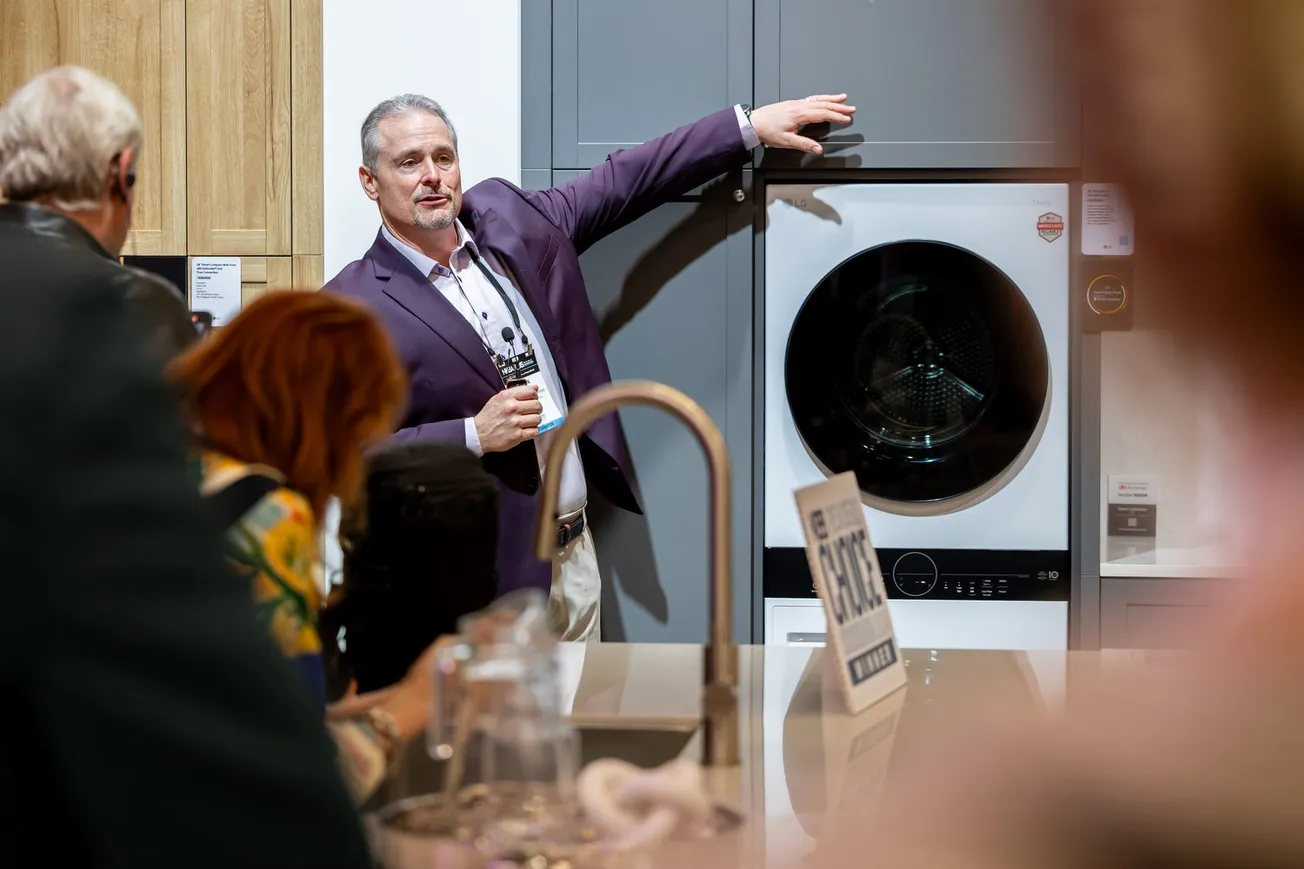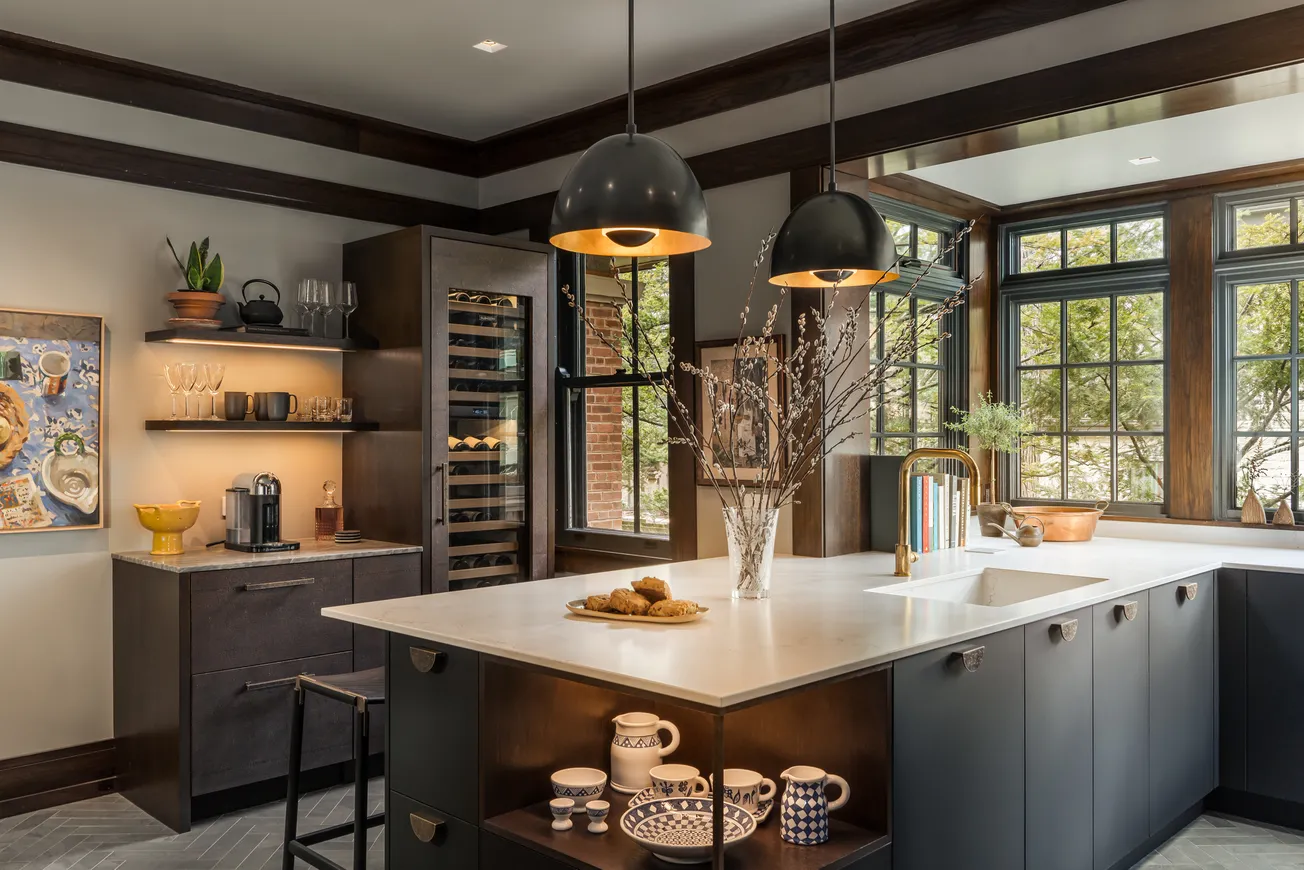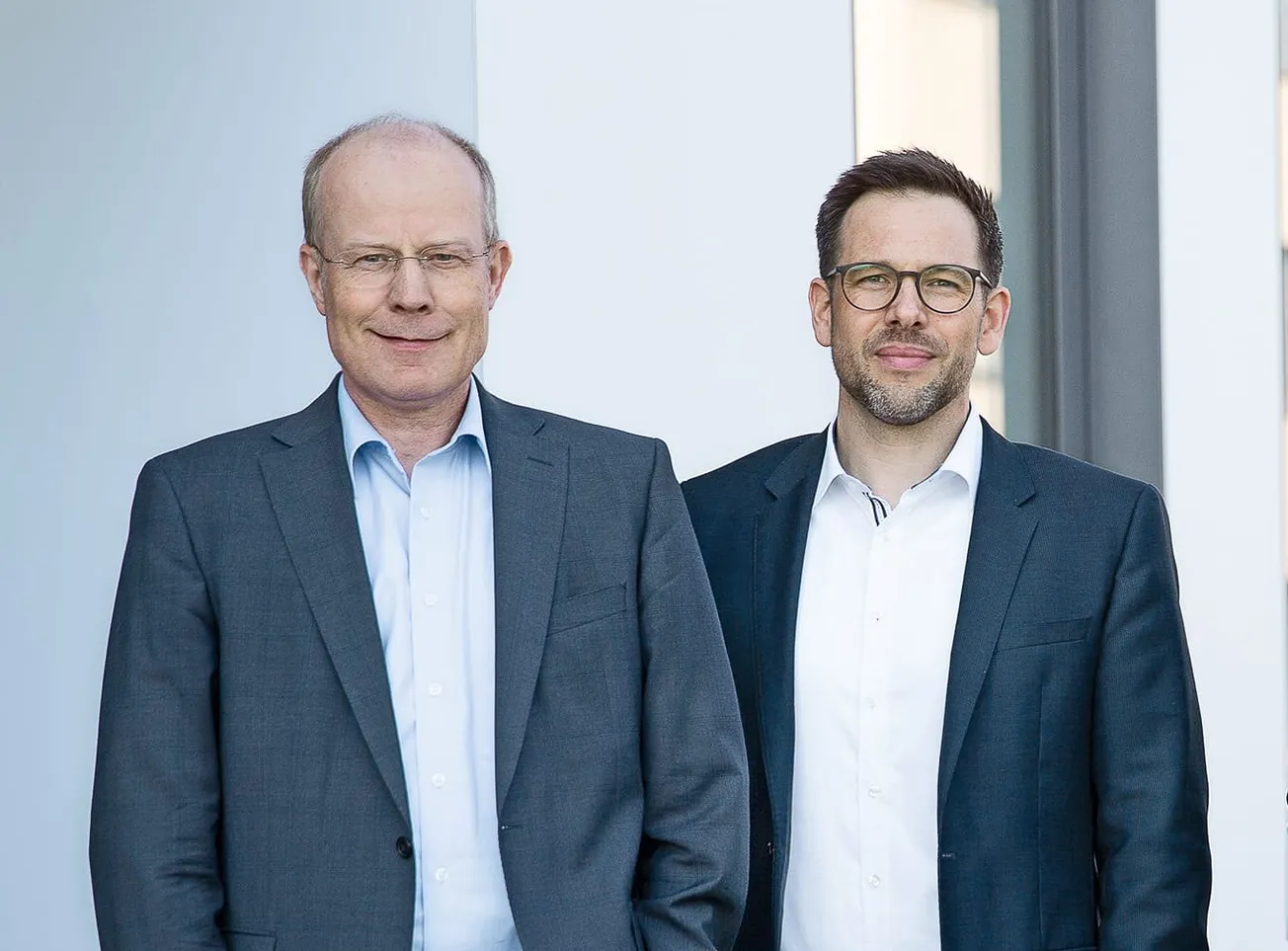Table of Contents
By Suzanne VanGilder
A Conestoga is a vehicle used to transport essential goods  and open new frontiers. It is also an apt name for North America’s largest manufacturer of custom kitchen door and drawer components. Despite more than 50 years of experience, Conestoga Wood Specialties is anything but old fashioned. The company is continually trailblazing, with ongoing technology investments that increase capacity and deliver new materials across the land.
and open new frontiers. It is also an apt name for North America’s largest manufacturer of custom kitchen door and drawer components. Despite more than 50 years of experience, Conestoga Wood Specialties is anything but old fashioned. The company is continually trailblazing, with ongoing technology investments that increase capacity and deliver new materials across the land.
Conestoga’s most recent innovations revolve around a new 47,000-square-foot finishing facility built at its East Earl, Pennsylvania, location. But as with any great design, the new building serves more than one purpose.
“The reason we expanded really came down to capacity and product mix,” said Jeff Eichenseer, marketing director at Conestoga Wood Specialties. “Once we get our finish area all in one place, that will free up room to expand the alternative materials program. The two go hand in hand.”
Starting with the Finish
Even before the recession, Conestoga was pushing up against its finishing capacity. When the market returned, many customers that had downsized started outsourcing to Conestoga in large volumes. For the past five years, Conestoga’s paint and stain volume has averaged more than 20 percent year-over-year growth, more than doubling its daily piece volume.
“Longer term, the only way to raise our total capacity was to add more flat line finishing equipment, and the new machines have some height to them,” Eichenseer said. “Even though our current flat lines are going to be removed when this expansion is done, they cannot be taken out of commission until our new machines are up to speed. So we built. The first Venjakob Automatic Flat Line Finishing System is up and running. Another is on order, and there will be a third.”
On the applied finishes side, Conestoga’s investments also respond to a shift in consumer preference away from stains and to more paints. With an offering of more than 1,500 paint colors and 2,000 species, stain and glaze combinations, capacity is not the only issue the new facility addresses.

“The new facility is also about efficiency,” said Conrad Good, finishing technical manager for Conestoga. “Previously, our finishing department was in two adjacent locations within the facility. Bringing everything under one roof will move product through more effectively. In large volume, even small efficiencies add to the bottom line.”
Each Venjakob Automatic Flat Line Finishing System is custom built to meet Conestoga’s specific requirements in terms of finishing materials, over all processes and dry times, allowing Conestoga to transition to the new facility without interruption.
“The first machine is a lot more efficient than our existing two flat lines, so we are actually able to shift all our priming to that one machine and still use the other two,” Eichenseer said. “The second line will be similar and used for large batches of white or gray paints. The third will be configured differently for top coating and sealing.”
Conestoga brought several companies in to bid on the  finishing and related panel-processing expansion. “We learned a lot through the process,” Eichenseer said. “I worked with the corporate engineering team, and in the end, we were very pleased with the commitment of the Stiles Machinery team to not only sell us equipment, but to learn our products and processes. They’ve been here since the beginning making sure our team is trained and everything is up and running.”
finishing and related panel-processing expansion. “We learned a lot through the process,” Eichenseer said. “I worked with the corporate engineering team, and in the end, we were very pleased with the commitment of the Stiles Machinery team to not only sell us equipment, but to learn our products and processes. They’ve been here since the beginning making sure our team is trained and everything is up and running.”
The other part of finishing is, of course, the finish. “We have a very good partnership with Sherwin-Williams as far as the coatings,” Good said. “We made the transition in 2013, which was big. They have technical reps come in on a regular basis to help us and have been very involved with the new facility.”
Conestoga uses three primary solvent-based finishing materials. “We experimented with water-based. The materials are more affected by humidity and temperature. They were often blotchy and inconsistent — even different components within a five-piece door,” Eichenseer said. “We feel solvent-based materials give the quality finish our customers demand and we want to produce.”
In addition to the flat lines, Conestoga’s new finishing facility includes a freestanding spray booth for manual application, a freestanding infrared oven with programmable heating recipes and sanding rooms with downdraft tables, filtration systems and clean air return.
The Great Migration
The latest investments in finishing were necessary to meet demand for stained/painted doors and add production space. “But the big investments in the future are going to be related to the alternative materials,” Eichenseer said. “The reason being OEMs, larger custom shops and end customers are really beginning to discover those products. A lot of kitchen manufacturers want to move away from RTF, and they don’t want to pay the price for a painted wood door. Some of these products we are coming out with look very much like paint or wood. They have the same feel, and they cost at least 30 percent less.”
Conestoga has always used plywood in door manufacturing. For painting, however, MDF is both a better substrate than wood and an integral part of the company’s line of hybrid doors. But the demand for decorative materials such as Cleaf’s TSS (thermo-structured surfaces) and DLV (decorative laminate veneer) is pushing Conestoga to allocate resources into panel-handling and processing equipment.
“We are seeing a market shift away from traditional raised panel and shaker styles. Customers are starting to embrace these new materials,” said Eichenseer. “We think people are going to migrate to frameless cabinetry, and we expect to see alternative materials increase as an overall percentage of our business.”
This year, Conestoga went from a single Holzma panel saw in the East Earl facility to three panel saws in a dedicated space. The company is investing in automated material handling to convey the large TSS panels used in the Strata line. There is also warehouse space for sheet goods and the DLV components used in the recently revamped Allure line.
Perhaps the most interesting indication of Conestoga’s intentions is the acquisition of two Brandt edgebanders, both with hot-air capabilities. “Going back about a year and a half, we did not have any edgebanders at this facility. Now we have two, which tells you about growth because we felt we needed to add a second one so quickly,” Eichenseer said. “When Homag bought Brandt, they invested a lot of money into upgrading the brand from being kind of a middle-of-the-road machine to one that really has some of the nice Homag features.”
Most modern edgebanders can handle the PUR system used for the Strata TSS-line, but Conestoga had the future in mind when choosing between laser and hot-air capabilities. “The laser machines are a lot more expensive, and running them on a regular basis costs more in energy,” Eichenseer said. “I spent a lot of time at tradeshows talking to machine and edge tape manufacturers, and they all told me that if we weren’t going to run these machines at least two full shifts a day and really pound out parts, then don’t go with laser. Laser is all about volume.”
Another thing Conestoga spends a lot of time observing at tradeshows is trends. “Millennials don’t want their parents’ cherry cabinets. Material technology advances so quickly, with deep texture and realism, it’s not old, flat melamine. Consumers are excited,” Eichenseer said. “The other trend we’ve seen all over is high-gloss, and we wanted to get out ahead of it. With the hot air, we can achieve the zero-edge glue line needed to make great high-gloss products.”
New Frontiers
This July, Conestoga will roll out a program consisting of  three high-gloss offerings with some products new to North America and relatively new in Europe. Each product builds on existing decorative panel technology to bring beautiful and durable high gloss to the mainstream market.
three high-gloss offerings with some products new to North America and relatively new in Europe. Each product builds on existing decorative panel technology to bring beautiful and durable high gloss to the mainstream market.
The first two are made with a printed décor paper laminated to an MDF substrate and topped with either a PET or PET-G film. PET-G has the same chemical composition as PET, or polyethylene terephthalate, with an additional glycol molecule, which removes the undesirable hazing effect of crystallization. It is also less brittle and more impact resistant than PET. PET-G is the same material used for translucent resin panels.
“We are offering PET as a commodity-driven, price-point item — kicking off the program with only one PET color, white, which accounts for more than 70 percent of the U.S. high gloss market. Our PET program will be introduced with a 1.0mm ABS gloss edgeband applied with PUR adhesive,” Eichenseer said. “This allows us to provide cost-effective but good quality doors and drawer fronts for both multi-unit and single-family kitchens. It provides our customers a great starting point but also leaves room in their offering to upsell.
 “The PET-G high-gloss board is relatively new to the industry. It is a thicker, more durable film than the PET, providing a greater degree of depth and clarity.” The PET-G is available in several solid colors. A 1.5mm thick edgeband is applied using hot air technology, which melts the materials, creating seamless edges. Though PET-G components cost more, they are a superior product, providing manufacturers and designers with premium high-gloss materials appropriate for higher-end kitchen and commercial applications.
“The PET-G high-gloss board is relatively new to the industry. It is a thicker, more durable film than the PET, providing a greater degree of depth and clarity.” The PET-G is available in several solid colors. A 1.5mm thick edgeband is applied using hot air technology, which melts the materials, creating seamless edges. Though PET-G components cost more, they are a superior product, providing manufacturers and designers with premium high-gloss materials appropriate for higher-end kitchen and commercial applications.
The third material in the offering is Alvic’s LUXE high-gloss lacquer. According to Miquel Rifa, area manager for GRUPO ALVIC in the U.S. and Canada, this is the leading high gloss surface worldwide. LUXE is produced via a patented process that builds on standard decorative panel methods. An MDF board is laminated with a melamine décor paper, which is then treated with a primer, lacquer and protective film. Alvic impregnates the décor papers in-house and produces its own TFL. The company works in collaboration with university research programs to develop proprietary lacquer and application processes.
“In addition to solid colors, we also offer some woodgrains, linen and abstract patterns in the high-gloss UV lacquer,” Eichenseer said. “The end products are quite stunning. The more you look at them, the more you think, ‘I can see that in certain applications. Especially retail and commercial.’”



Conestoga is able to roll out new materials and deliver them far and wide in part because the company continually invests to improve the quality and efficiency of traditional workhorse materials.
“Being a component supplier to nearly 3,000 customers, we strive to create solutions to address many customer needs,” Eichenseer said. “This leads us to offer various materials and price points to satisfy our customer base. We understand that we need to stay in tune with these new materials as they evolve. We’re already focused on our next introduction in spring 2018, and have begun looking at what will come after that.”










